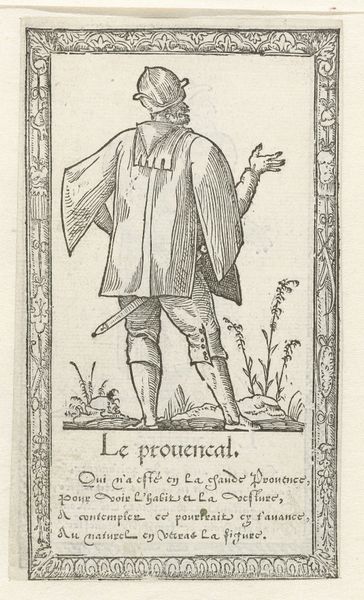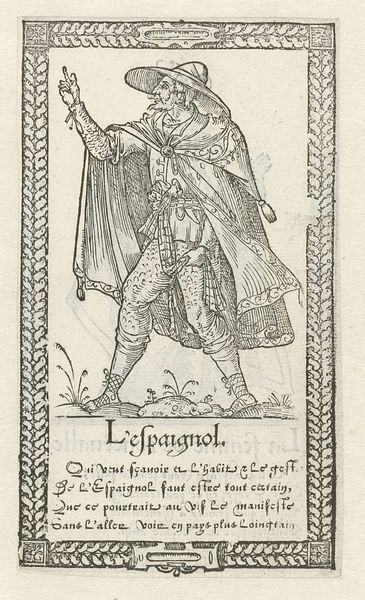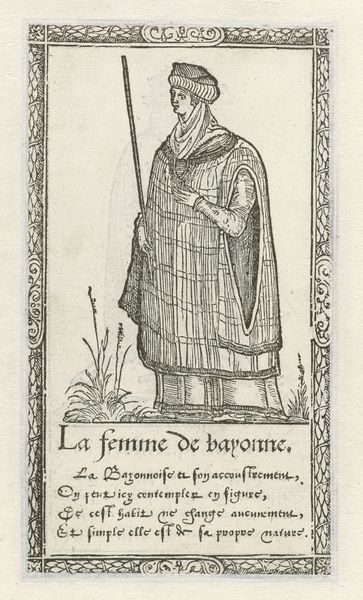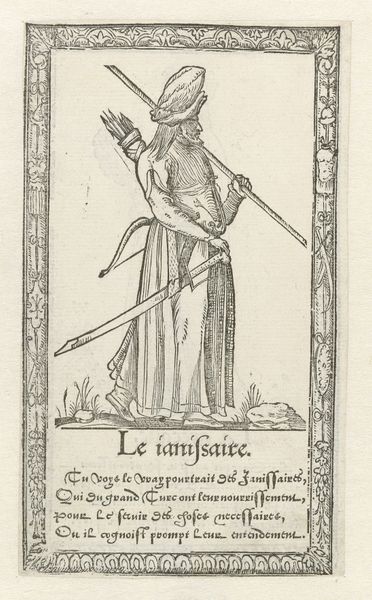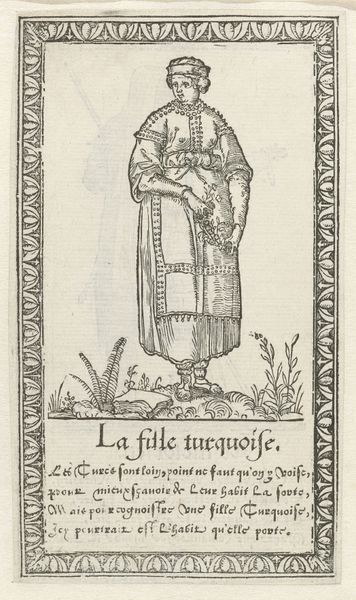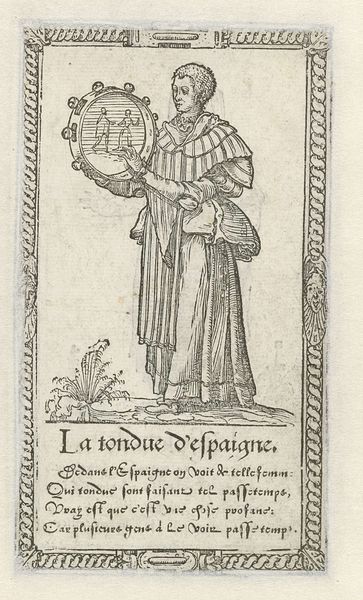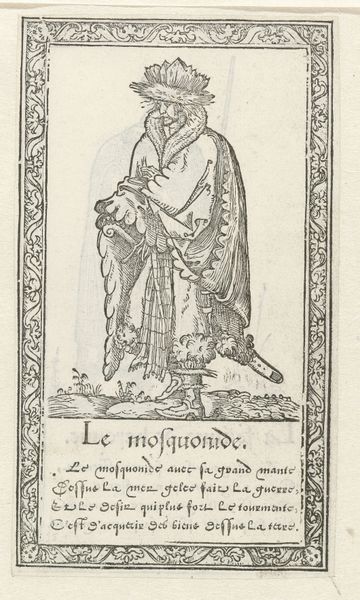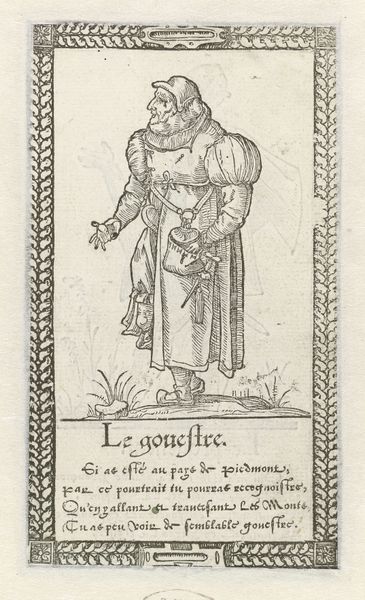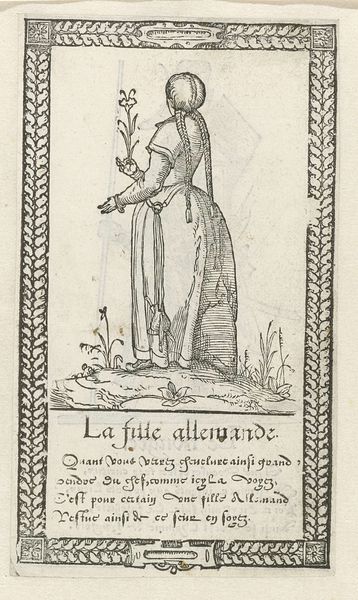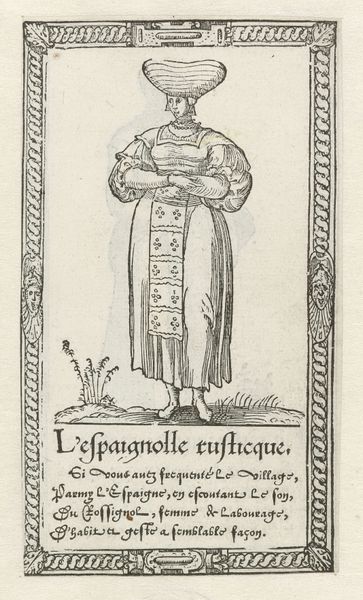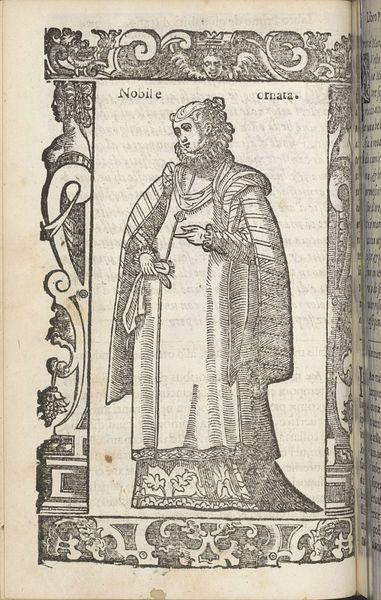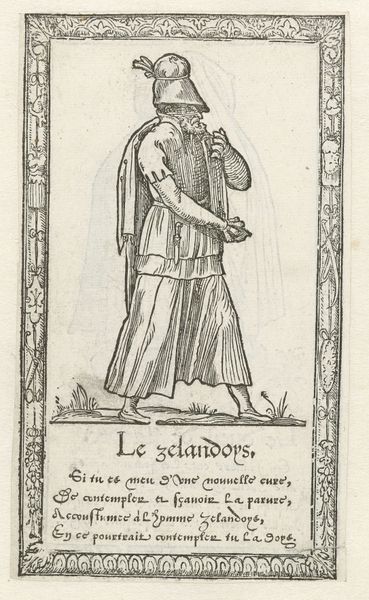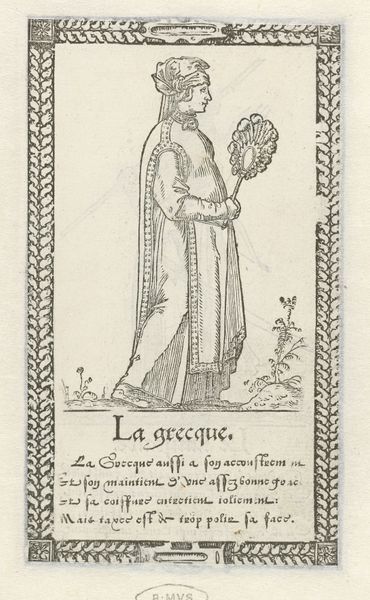
drawing, print, engraving
#
drawing
# print
#
figuration
#
11_renaissance
#
line
#
engraving
Dimensions: height 146 mm, width 86 mm
Copyright: Rijks Museum: Open Domain
Curator: Welcome. We’re standing before a work by François Desprez entitled "Griekse bediende in Turkije," or "Greek servant in Turkey," created in 1562. It's an engraving, defined by very clear, deliberate lines. Editor: It feels quite stiff, doesn't it? Almost like a posed photograph, though the lines have a crispness that I do admire. The detailing in the armour is quite striking against the relative plainness of the servant's clothing. Curator: Indeed. What's crucial here is understanding the cultural context. The piece emerged during a period of significant tension and exchange between Europe and the Ottoman Empire. Images like this served as both documentation and political commentary. Depicting a Greek serving a Turk touches on ideas of subjugation and the power dynamics of the era. The original title "Le Grec servant le Turc" provides that insight, revealing the socio-political climate. Editor: I am curious about the artist's deliberate contrast between the opulence of the ottoman armor and the relative plainness of the Greek's clothing and the somewhat plain shield—it's almost as if the technique highlights the servitude aspect purely visually, focusing us not just on *what* is portrayed but *how* it is shown. The figure itself is posed to reveal, his eyes are even gazing slightly upwards. Curator: Precisely. And the print medium itself allowed for wide dissemination. These images shaped public perceptions of the "other", reinforcing existing stereotypes while also providing information, however biased. Also worth pointing out that the choice to reproduce it as a print indicates its broad accessibility. The image was intended to reach a wider public. Editor: And one can’t ignore that text. It almost serves as a label, making explicit what the imagery implies. Let's also discuss the way that those bold lines construct the texture of clothing, the reflection on the metal. Curator: Ultimately, this piece functions as a fascinating historical document. Through it, we get a glimpse of the Renaissance’s complex view of Eastern cultures, filtered through the lens of artistic and political intentions. Editor: I see it as a study in contrasts: rich versus plain, powerful versus submissive and rendered with deliberate lines that underscore the precision of both observation and intention.
Comments
No comments
Be the first to comment and join the conversation on the ultimate creative platform.
